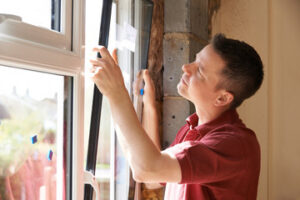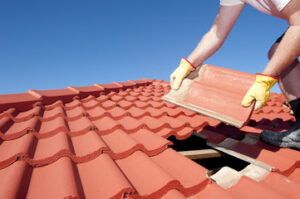Window Replacement is a significant investment. You want to be sure your new windows will not only look good, but provide a strong barrier against outside weather.

Whether you’re doing an insert or full-frame replacement, there are several factors that influence the cost of the project.
Whether you’re concerned about drafts, high energy bills, visible damage to the frame or glass, or fading of furnishings and fabrics, replacement windows can improve your quality of life in many ways. Energy efficiency, improved aesthetics, and reduced home maintenance are some of the primary benefits, but your investment can also pay off in increased resale value when the time comes to sell your home.
New window options are more efficient than older ones, helping to keep heat inside in the winter and out in the summer. Depending on your climate, you may benefit from triple-glazed windows or other options that provide superior insulation and reduce energy costs. Glass technology has also made significant improvements over the years, reducing glare and providing UV protection, which protects furniture and draperies from sun damage.
The energy-efficiency of a window can be assessed by looking at its Solar Heat Gain Coefficient (SGHC), a measure of how easily the window allows heat to pass through. SGHC ratings range from 0 to 1, with lower numbers indicating better energy performance.
Another factor in a window’s energy efficiency is its insulating properties, which are enhanced by the use of dead air spaces between panes of glass and other features like warm-edge spacer bars that reduce heat transference. A window’s frame is also a crucial component of its overall energy performance. Strong frames can help to insulate the interior of your home, resist deflection, and minimize areas of air infiltration, all contributing to a window’s energy-efficiency rating.
When selecting a new window, look for ENERGY STAR certification. This indicates that the window meets a set of rigorous criteria for energy efficiency established by the National Fenestration Rating Council (NFRC). The Department of Energy’s consumer resource, Energy Saver, provides a helpful breakdown of window energy ratings and what they mean for your home.
If you’re unsure how to choose the right window for your home, consider consulting a professional. A qualified contractor can help you select a window that will meet your specific needs while ensuring the best results for your energy efficiency goals.
Security
Feeling safe and secure in your home is a major concern for most homeowners, and while many invest in alarm systems and security cameras, windows are often overlooked as potential points of entry for burglars. However, modern replacement windows offer several key security features that can help fortify your home against unauthorized entry.
Durable Frames
When choosing a replacement window, opt for a durable frame that can resist forced entry attempts and other damage. Look for frames made from strong metals like aluminum and steel, as well as composite materials such as Fibrex.
One of the most important things you can do to increase your window’s security is to choose a model that incorporates multiple panes of glass. In addition to increasing energy efficiency, these windows are harder to break into. You can also improve the security of your new replacement windows by choosing tempered glass. This type of glass is treated with extreme heat to make it much stronger than regular glass. When it breaks, tempered glass shatters into small diamond-like pebbles instead of sharp shards.
Other security features that you can include in your replacement windows are window treatments that will keep your belongings and family members private. You can find applications at the hardware store that you can apply directly to your windows to make it difficult for burglars and other unauthorized individuals to see inside your home.
You can also opt for etched glass to give your windows a custom design while ensuring privacy. This type of glass is commonly used in bathrooms, but it can also be a great way to provide extra privacy for any room in your home.
Lastly, you should always choose a replacement window with robust locking mechanisms. These locks can be more difficult to open and close than traditional single-point lock systems, and they distribute force more evenly, making it harder for intruders to pry open your windows. In addition, these locks can be integrated into home automation systems so that you can monitor and control your windows from anywhere in the world.
Aesthetics
Window replacement is an opportunity to upgrade your home’s appearance both inside and out, and to refresh its architectural style. Modern windows offer a wide range of styles and materials, which can be combined to suit any taste. In addition to their aesthetic appeal, new windows are also designed with improved functionality and durability. Choosing energy-efficient windows can help reduce utility bills, improve comfort levels, and create a healthier living environment.
While many homeowners consider window replacement as a cosmetic improvement, it is important to address any issues that could impact performance. For example, drafts and broken seals allow outside air to enter your home, increasing heating and cooling costs. Cracked or single-pane windows can let in moisture and dirt, leading to mold growth and poor interior air quality. If you notice condensation between window panes, this indicates a failed seal and should be replaced as soon as possible.
The best time to replace windows is in the fall before winter arrives, allowing you to enjoy the benefits of your renovation project all year round. New windows can withstand harsh weather conditions, and their energy-efficient designs are a welcome boost to your home’s insulation.
Aside from boosting energy efficiency, new windows can also improve your home’s security. Many modern designs feature advanced locking mechanisms and stronger materials that offer greater protection against break-ins. Additionally, acoustic insulation and coatings can reduce noise pollution, creating a quieter, more relaxing living space.
When selecting a company to install your new windows, make sure you choose one with a proven track record and a solid reputation. Check their licensing and insurance coverage, as well as customer reviews and references. Then, ask about their product lines and installation process. It is also helpful to inquire about the length of the warranty, as well as any financing options that may be available.
In addition to addressing any existing problems, window replacement can increase your property value by improving the appearance of your home’s exterior and enhancing its curb appeal. Upgrading your windows can also make it easier to maintain and clean, with features such as tilt-in sashes and easy-to-clean materials.
Maintenance
Window replacement is a significant investment. However, the upfront costs are offset by lower energy bills and reduced maintenance costs over time. In addition, aesthetically-pleasing windows improve the overall value of a home. Furthermore, homeowners who opt for window replacement can rest assured that their new windows comply with current energy efficiency standards.
Investing in repair or replacement is an important decision that requires professional assistance. A qualified inspector can assess the condition of your windows and provide recommendations that are tailored to your specific needs.
Visible damage such as cracks and breakage is a clear indicator that it’s time for window replacement. Ignoring the problem only leads to more extensive damage and costly repairs down the road.
A professional inspection will identify underlying issues that may be difficult to notice. These issues can include structural integrity, moisture infiltration, and energy efficiency based on heat loss and insulation performance. The inspector will also review the condition of your window frame and sash, hardware, and seals, providing a detailed assessment that will help you determine the best course of action.
One of the most common signs that you need to replace your windows is difficulty opening or closing them. This can occur due to the natural settling of your home or wear and tear on the window components. In some cases, the window can become misaligned and require a simple re-balancing procedure to resolve the issue.
Difficulty opening and closing windows can also indicate safety concerns, such as malfunctioning latches or compromised locking mechanisms. It’s critical to address these issues before they escalate, as they can pose a risk to your family’s security.
Keeping up with routine maintenance will keep your replacement windows looking and functioning their best for years to come. A regular cleaning of the window frames and sash using a mild detergent or water can keep them clean and free from mold, mildew, dirt, and debris. The use of harsh chemicals and abrasives should be avoided, as these can strip the finish on your windows. For the glass, a mixture of vinegar and water or commercial glass cleaner will do the trick.




